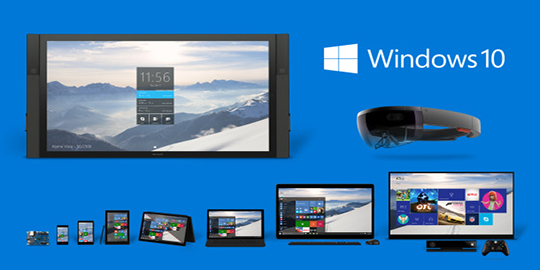
Technology Observatory January 19-25
This week's Technology Observatory is packed with news:
● Amazon to produce its own movies... but for theaters first
● The first screenshots of Firefox in iOS arrive
● The Los Angeles subway to offer Wi-Fi connectivity and phone coverage to passengers
● Second and final warning: 10 days for applications submitted to the App Store to include 64-bit support
● The European Union looking into taxing Google and other U.S. technology firms
● WhatsApp Plus announces its closure after WhatsApp bans users
● WhatsApp Web goes live
● Samsung to rely on VISA to promote its mobile payment service, Samsung Pay
● The salient points of the 15th Information Society Report
● What came out of the Microsoft Windows 10 event
● Office 2016 to arrive in the second half of 2015
● Telefónica sells its British subsidiary O2 for more than 13 billion euros
In addition to television series, Amazon has announced that this year it will embark on an important new adventure: producing its own movies. Paradoxically, in this case we are looking at a more traditional form of distribution as the movies will be released to theaters first. The big novelty proposed by Amazon, and which differs from the usual model, is that titles will reach Amazon Prime Instant Video (the eCommerce giant's video subscription service) just one or two months after their release in theaters. This is a considerable "sprint" when you consider that movies currently take between nine and 12 months to reach video subscription services in the United States. According to Amazon, the idea is to release an average of 12 movies a year through Amazon Original Movies, starting a few months from now. Spearheading the project is Ted Hope, a well-known independent producer who in fact has his own company. Will Amazon be an independent studio or will it venture into higher-budget projects? We'll have to wait a while yet to find out.
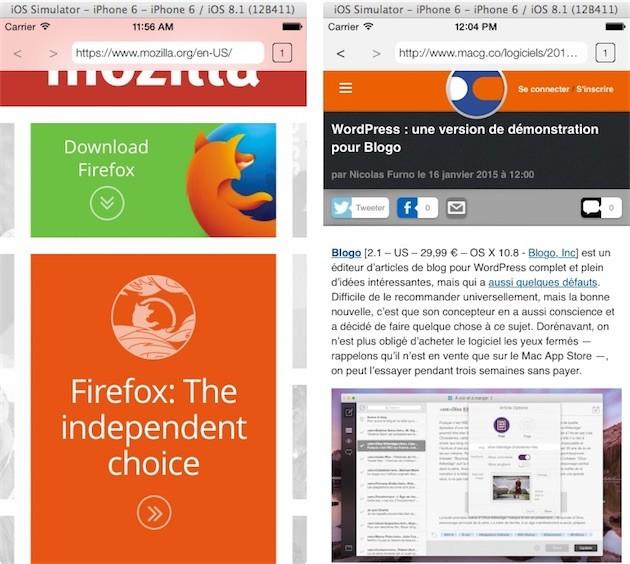
In the battle between browsers over iOS, we all – or many of us – know that it was won by Apple itself with Safari due to the restrictions on using engines other than Webkit, which is why last March Mozilla was so categorical: there won't be an iOS version of Firefox until Apple lifts that restriction. However, with the arrival of iOS 8 Apple seemed a little more open to developers, and a few weeks ago Matthew Ruttley, manager of data science at Mozilla, announced through his Twitter account that following the introduction of the Javascript Nitro Engine on iOS 8, Firefox would soon land there as well, and this week we saw the first screenshots that tell us something about what it will look like. Apparently obtained thanks to an iOS simulator, the screenshots are very much in line with the design we saw in iOS 7, featuring an address bar with that transparent effect and the barest of elements, namely the back and forward buttons, the tabs and, of course, the box for the URL. Thanks to the size of the images, we can also see that these are already optimized for the iPhone 6 and 6 Plus display sizes. There are also all the tools for creating profiles, so you'll be able to access the data stored in your Mozilla account as well as your log, tabs and favorites, either on your iPhone or any other platform where you've installed Firefox. So, just over a month after the confirmation of Firefox for iOS, it seems the development is forging full-steam ahead with an attractive appearance. Unfortunately, there's still no official date for when the browser will be available for iOS devices, but we'll certainly be keeping tabs on the situation.
If you're a regular user of public transportation, no doubt you'll have been frustrated by not being able to browse the Internet on your smartphone when you're on the subway, where there is usually no data coverage. Well, as reported in the Los Angeles Daily News, the city's subway system will soon offer passengers Wi-Fi connectivity, putting an end to this situation. For the moment, given the huge scale of the project, Wi-Fi connectivity will be phased in gradually at different subway stations, beginning with the Red Line. InSite Wireless LLC is the company responsible for installing the necessary infrastructure. According to initial estimates, the project will cost around 800,000 euros and will take two years to complete.. Once finished, passengers will have both Wi-Fi connectivity and cellphone coverage, neither of which are possible at the moment. Even so, Wi-Fi connectivity will only be available at stations, not while the trains are moving, whereas cellphone coverage will be operative throughout the entire journey.
About a month ago, Apple issued the first warning to developers: it's time to embrace the future in the form of 64-bit support for every application published in the App Store. And there must be quite a lot of those applications that haven't yet made the move because Apple has issued another warning with just 10 days to go to the deadline. Here's a reminder of the requirements: with effect from February 1, all applications published on the App Store must support the 64-bit environments offered by Apple's new mobile terminals. Apps can also have backward compatibility to support 32 bits, but that's optional. What is compulsory is that programs must be capable at the very least of running properly in modern devices. If you have published an application that only runs in 32-bit environments and you have no intention of updating it, don't worry: it won't be deleted. Apple will give you a grace period up to June to prepare your 64-bit updates. If you want to improve your app after that date, you'll have to include 64-bit support or you just won't be able to update it. Like they say, adapt or die.
"If they are playing in our European market then we have some instruments to come to a guarantee that they are acting on the basis of our rules." Günther Oettinger, the EU commissioner responsible for the digital agenda, was referring to Google and other U.S. technology companies that operate in Europe. According to Oettinger, and as reported in the Wall Street Journal, Europe is currently a "loser" in the new technologies sector and a level playing field has to be created so that everyone has the same opportunities. "Taxing is an option but not the decided solution", he said, adding that it was one of several possible measures about which no final decision has yet been made, although they are "open". Curiously, a few weeks ago the United Kingdom took the initiative regarding big tech companies that set up in countries with favorable financial legislation for conducting their activities, announcing the introduction of a special tax. This means that taxes generated by activity conducted in the United Kingdom are no longer paid only in Ireland, which was the case until now. "We need a single set of rules," said Oettinger in reference to this matter. Of particular note is his assertion that Google will have to pay a tax for showing copyright material. It's not the first time that the commissioner has mentioned this proposal. Just before he took up his present post, he announced that he was in favor of imposing a "Google tax" across the whole of the European Union, like the one that currently exists in Germany allowing the media to demand payment from Google for posting snippets in Google News. Unlike the situation in Spain where the Canon AEDE or fee levied by the Spanish Newspaper Publishers Association is unavoidable, this is optional in Germany. The commissioner wants Google to pay for showing content with third-party copyright, as is currently the case in Germany. At a different event held two hours later, Oettinger insisted again that "Google has to accept our European rules" and that as regards the antitrust investigation into the giant search engine that the European Union has been pursuing for several years, "Google has to bring more offers to us", meaning that it needs to put more proposals on the table and compromise. Another proposal, and one for which both telecommunications operators and technology companies have been pushing, is the creation of a single digital market. "Twenty-eight fragmented markets are not good for investment, not good for start-ups, not good for developing new working places, and not good for users," explained Oettinger. This is the same argument we heard from Telefónica, Vodafone and Orange a few months ago: having to adapt to so many different rules is very off-putting for anyone looking to start up a digital business in Europe. According to the commissioner, the idea is that companies from outside the EU would also have to adapt to that single market with its single set of rules. As he pointed out, this would avoid the situation whereby certain U.S. companies set up in EU countries with less stringent data protection legislation and operate from there for the whole of the European Union, gathering information about users from other member countries that have tighter regulations for protecting their citizens' privacy.
Last Wednesday evening we saw WhatsApp make a stand by applying its service terms and conditions to temporarily lock the accounts of WhatsApp Plus users, thus forcing these users to install the official application to use their accounts and the messaging service. This reaction was tantamount to a death sentence for unauthorized WhatsApp applications, so it's hardly surprising that a few hours ago WhatsApp Plus announced its closure. After all, where's the point in maintaining an application that can't be used any more? Dr. Mounib Al Rifai, owner of the official WhatsApp Plus community, confirmed the death of WhatsApp Plus in his Google+ account . They have received a cease and desist letter from WhatsApp forcing them to remove all download links and delete their community.
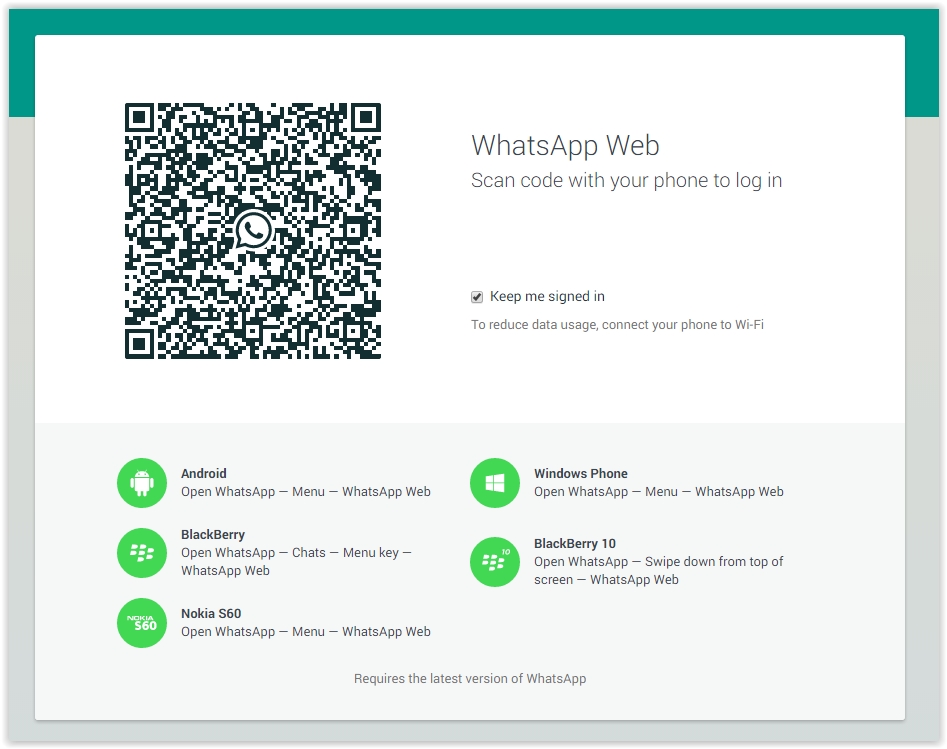
WhatsApp Web has been officially released, allowing its 700 million users to access conversations, contacts and groups from any device with a browser. At long last, WhatsApp will no longer be 100% dependent on a cellphone – a function long-awaited by so many users around the globe is finally here. For now, WhatsApp Web can be activated for users who have installed the latest version in Android, Windows Phone, BlackBerry or BlackBerry 10. However, as far as we can tell, there is currently no support for iOS, but this will undoubtedly change in the next few hours or days with the most recent version of the application, which is necessary to read a QR code that will synchronize the platform in the cellphone with the web version, thus allowing you to pick up all your conversations directly from your computer or tablet. To date, one of the functions that has made Telegram so popular is precisely having a web version and desktop applications, all of which synchronize perfectly, something that hardly any other messaging client has managed to do. But let's be honest: with its 700 million active users, WhatsApp is the currently the largest messaging platform and is unlikely to be defeated by a rival, even less so now that it has started to provide the public with what it wants. We'll have to wait for the cellphone update to finally be able to start talking and ignoring bothersome chains of messages directly in our PC or Mac browser without touching our phone. However, due to Apple restrictions, iPhone users won't be able to use WhatsApp Web, though that will undoubtedly change very shortly. If you want to use WhatsApp Web in Safari or Internet Explorer, bad news: it only works in Google Chrome.
The Samsung Galaxy S6, the South Korean company's next franchise terminal, is expected to be unveiled at the upcoming Mobile World Congress, and we're expecting see a lot of novelties in device that is likely to offer more than a new design and specifications. One of these novelties will be the reinforcement of the mobile payment service Samsung Pay, in which the company will have a very important ally: VISA. Another firm that will join the alliance is McAfee, whose security solutions will offer protection from threats of fraude, spyware and viruses. Samsung has collaborated with PayPay in the past, for example by letting users authorize PayPal payments with the fingerprint sensor in the Galaxy S5, Galaxy Note 4 and Galaxy Alpha terminals, but the consortium with VISA will mean that it will be possible to associate any card of this type with Samsung's own mobile payment system. The Samsung Galaxy S6 is expected to come with a fingerprint sensor more like the one found on iPhones and iPads, rather than the current one that requires you to slide your finger over the home button. That would probably make Samsung's proposal more interesting, although we'll have to wait and see what their deployment plans are and the possible pros and contras of this system compared with Apple Pay from Cupertino, its clear rival in this segment.
Telefónica has presented its 15th Information Society Report, in which it analyzes and describes the current situation and developments in the information society and, more importantly, the outlook for the future. For example, the company states that 2014 was a year of consolidation for the European telecommunications operators, with excellent prospects for the future of the sector. Telefónica CEO Mr. César Alierta and Executive Vice Chairman Mr. Emilio Gilolmo also presented some very interesting facts and figures about users, the state of the web and connected devices, therefore providing an overview of the entire sector:
● More than 81% of all mobile terminals in Spain are smartphones.
● 26.25 million people regularly access the Internet in Spain, and 78% of them connect every day: 21 million Spaniards accessed the Internet from their cellphone in 2014.
● A 140% increase in fiber since last year: 100,000 new accesses per month.
● A lot of interest and use of video on the Internet: a 300% increase in the online consumption of video.
● A 34% increase in connected TV (Smart TV) across Europe, with a 23% share in Spain.
● 64% of companies say their network infrastructure will not be able to cope with the challenges of the future.
● Encrypted communications have risen exponentially: 38% to 50% of Internet traffic in October 2014 was encrypted, compared with 10% last year.
● Cellphone access to digital media content has overtaken desktop access: 53% from a cellphone and 47% from a PC.
There are many interesting facts and figures. With regard to mobile messaging, Telefónica pointed out that this is now the favorite means of communication, with nearly 34% of instant messaging users organizing their offline activities through this medium. Most interesting of all, 44% of those who use it say they have intensified their contact with family and friends, which debunks the idea that smartphones isolate us. Similarly, the use of social media continues to rise, currently standing at 67.1% of all users, though for the first time it has fallen three points among younger users. The reason for this is not very clear, but probably points to the fact that young people's use of other tools like Snapchat, which are also social but more private, is leading more and more youngsters to abandon the traditional media. However, there are some important figures regarding web access and user behavior: two out of three Spaniards use more than one device to access the web, which is more than in the United Kingdom and the United States, so for the first time, the time spent accessing digital media from mobile devices (smartphone+tablet) has outstripped the time spent using PCs. This means that, including Latin America, Spanish is one of the languages with the greatest growth potential on the web, and it is already the second most frequently used language on social media, even in cities like New York and London. The most interesting thing of all is undoubtedly the foreseeable future of the web in Spain, with a vast growth of fiber in homes, confirming that Spanish users, unlike other countries, are always looking for better connections.
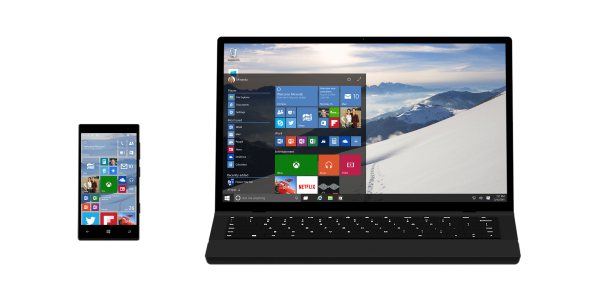
Last Wednesday January 21, Microsoft held a conference devoted to Windows 10, announcing details regarding the release of this new version of the operating system. The event was also packed with news about several of the company's products and their integration with Windows 10. To date, more than 1.7 million people have tried Windows 10 with the Insider program, and have installed the system approximately 3 million times. Microsoft is delighted with this and claims to have been using feedback from users constantly during the development of Windows 10. The main focus of the new version of the world's most popular OS is the ability to share experiences through different devices, and it is in this light that we can understand all the new things they are implementing.
Free upgrade to Windows 10 during the first year
The most interesting piece of news of the day, and something that many were expecting. Microsoft did take us by surprise, though, announcing that you will not only be able to upgrade to Windows 10 if you have Windows 8.1 but also if you currently use Windows 7. During the first year the upgrade will be free for Windows 7, Windows 8.1 and Windows Phone 8.1 users.. Once you have upgraded to Windows 10 you'll have free upgrade during the life time of the device. So Windows has become a service available from multiple devices. In fact, Microsoft wants to be thought of as the world's largest Internet service.
Windows 10
We got a look at many of the details of the new/old Windows 10 interface. Among the most significant are the return to the Windows 7 start menu, which can be resized to the full screen as in Windows 8, and the return to the more compact size that many of us are so fond of. We also saw a new more stylized taskbar with blue the predominant note. The taskbar also includes a button for the new Action Center, which lets you access quick actions like switching on Wi-Fi or Bluetooth. The Action Center also includes notifications of all the events that occur in the device, and third-party applications will be able to add buttons and images for users to interact with them directly. The Action Center in mobile devices synchronizes with the one on your PC, so if you discard notifications on your tablet they'll be deleted from the notifications center on your computer. Finally, the Control Panel and PC Settings section that were two separate instances before will now be united in a single settings menu. Another aspect that Microsoft played up is the Continuum. With this function, when you remove the mouse and keyboard from your PC you can swap to tablet mode to use the system through touch screens. Windows 10 also brings many new gestures for browsing more easily on touch devices.
Cortana
Cortana is a definitive arrival for Windows 10 and will be directly accessible from the taskbar. Microsoft's personal assistant will be able to perform searches in your local documents and the ones stored in OneDrive: things like "Cortana, show me December's photos" mean that the assistant will search in the file explorer for photos with that date and show them to you. And of course you will also be able to open applications simply by saying the name to Cortana, and if they're not installed she'll take you to the Windows Store so that you can download them.
Windows 10 in mobile devices
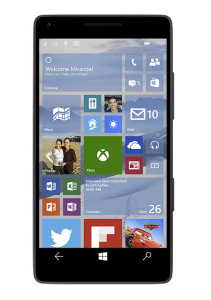
Windows 10 will also be available for smartphones and tablets, devices with screens of less than eight inches. And they'll all be synchronized. The interface has been greatly improved and looks much cleaner. They've also added interactive notifications so you can reply directly from the Notifications Center. And now the keyboard is floating so you can move it anywhere you want on the display. It also has great voice dictation. Plus, you'll be able to access Skype directly from the messaging app.
Universal Apps
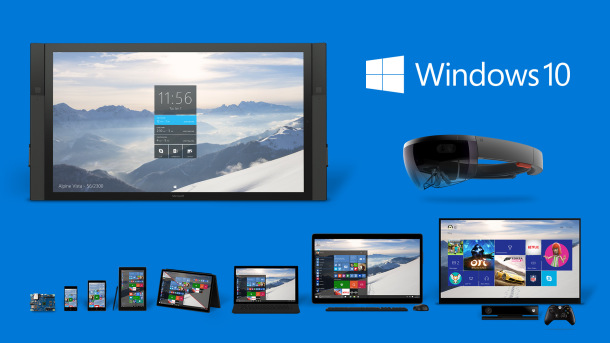
The Office, Word, Excel and PowerPoint applications will come ready installed on phones and tablets, skillfully adapted for small displays. The Outlook, Calendar, Photos and Music applications have also been redesigned for a uniform appearance across all devices. All the devices you own will have a built-in OneDrive application so that you can automatically upload your images to the cloud. The new photo app will also let you enhance your photographs instantaneously and create albums automatically. And in a couple of months it seems the support for uploading your music collection to OneDrive will also reach Windows 10.
Spartan
Confirmed! The new Microsoft browser with features that no other browser can currently boast, like adding notes and comments to the websites you visit using your keyboard or touch screen. You can mark any section of a website and save it with a clipping tool integrated with OneNote. Spartan also includes a read mode that turns the page you're looking at into a cleaner, clearer text, in the style of Pocket. Besides, any articles you add to your reading list for later will be synchronized on all your Windows 10 devices. And Spartan integrates perfectly with Cortana from the browser address bar to make browsing even smarter.
Gaming in Windows 10
With the new Xbox application for Windows you'll be able to access your Xbox One activity list and friends from Windows 10. Achievements, video clips and all your social activity will be automatically shown in what we might call a greatly improved version of Smartglass. You'll also be able to record video clips of your games on your PC with Steam, for example, and then share them to Xbox Live irrespective of whether or not the game supports the feature as Microsoft will execute it on a different layer. Finally, Windows 10 will use DirectX 12, and they claim it will deliver up to a 50% performance improvement in games. They also announced that the Unity developers have already adopted DirectX 12. But best of all was is thecross-platform gaming functionality, which will enable users of the same game to play with or against other players using Xbox One or a PC, as long as the game supports it. The other great news is that you'll be able to stream your XBox One games to any device with Windows 10, be it a tablet or computer. Most of these functions will reach Insider program participants within the next three to five months. Next week a new Windows 10 development version will be launched in 25 languages, and after the Superbowl they'll be releasing the first version of Windows 10 for phones.
Microsoft HoloLens
Augmented reality, projecting applications on the wall of your house using a headset developed by Microsoft, called HoloLens. This how Microsoft envisages the future of personal computing. They are inviting other developers of virtual reality devices like Oculus and Motion Leap to create these holograms, with Windows 10 at the center of it all.
After all the novelties with Windows 10, Microsoft has announced that Office 2016 will be available worldwide "during the second half of 2015". Besides, Julia White, general manager of the Office team, confesses that one of the tasks they're placing the most emphasis on is enhancing the mobile environment. In other words, they want to optimize the smartphone and tablet version so that the experience with the office suite is just as productive as with a PC. Naturally, Word, Excel, PowerPoint, OneNote and Outlook have been specially conceived not only to work perfectly in Windows 10 but on touch screens of any size. At last Wednesday's event we watched Joe Belfiore, vice-president of Microsoft Mobile, carry out a live demo of what Office 2016 will be able to do.
Last but not least, Telefónica has agreed the sale of its subsidiary in the United Kingdom,O2, to Hutchison Whampoa for 10 billion pounds (13.3 billion euros or 15 billion dollars), following a "barrage" of bids, including one from British Telecom, received by the Spanish telecommunications giant. The acquisition deal will be announced this Friday, January 23, according to a report in El Economista. Hutchison Whampoa had put in a bid last November to the tune of 13.6 billion euros, according to unofficial sources. So finally this is the company that will acquire O2 and not British Telecom, which also showed great interest but offered less money. This is an important development as the O2 purchase makes the Hutchison Whampoa group the absolute leader of the telecommunications market in the United Kingdom: it already owns Three and now O2 as well, which add up to more than 31% of the local market. Not only that, in 2013 Hutchison purchased O2 Ireland from Telefónica. Based in Hong Kong, Hutchison Whampoa is a name we are going to hear more and more in the telecommunications world as this major acquisition is only the first on its foray out of the Far East and the Asian continent. Meanwhile,Telefónica is immersed in various major acquisition deals around the globe, including this O2 deal in the United Kingdom which represents the loss of a significant sum of money because when Telefónica purchased O2 in 2005 it paid 26 billion euros. We await Telefónica's announcement and official statement about the sale of O2 with anticipation.
